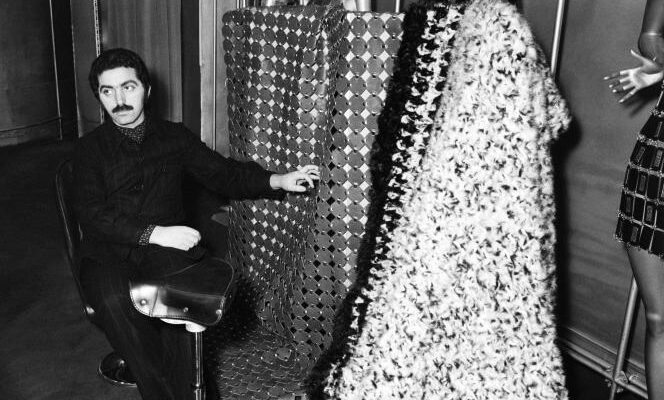He was a visionary in many ways. Paco Rabanne died in Portsall (Finistère), revealed on Friday February 3 The Telegraminformation including The world got confirmation. He leaves behind him a singular imprint in the history of fashion. At the turn of the XXIe century, his name was above all synonymous with blockbusters in perfumery or predictions as catastrophic as they were far-fetched. Yet his bold choices of materials, his way of working them, his avant-garde vision and his creative freedom have influenced a whole generation of couturiers.
Born on February 18, 1934 in Pasaia, in the province of Guipuscoa in the Spanish Basque Country, Francisco Rabaneda y Cuervo – his real name – was immersed in the world of couture very early on thanks to his mother, who worked for Cristobal Balenciaga. After the death of her husband, colonel of King Alphonse XIII shot by the Francoists, the latter fled Spain with her four children. They cross the Pyrenees on foot and arrived in France, they take refuge in Brittany, near Morlaix. Paco Rabanne grew up imbued with both the pragmatism of his mother, a committed socialist, and the shamanism of his grandmother, who was also a fervent Catholic.
At the age of 17, the young man moved to Paris where he studied architecture for ten years at the National School of Fine Arts, notably with the reinforced concrete specialist Auguste Perret. ” A major and difficult art that requires absolute rigor “, he confides to The Express in 2008. This rigor, he also puts it at the service of the drawings he produces, in parallel with his studies, for major fashion houses (Dior, Givenchy, Balenciaga…).
“In the spirit of the Dadaists”
” Quickly, I noticed that the Parisian couturiers took pleasure in an attitude that was far too old-fashioned for my taste. (…) The world was changing and fashion was bogged down in appalling immobility. (…) This is how the project of presenting my own haute couture collection germinated in my mind, in the spirit of the Dadaists, that is to say in a gesture of provocation and revolt, in the hope to shake up this inertia a little and to promote, perhaps, greater modernity “, he writes in Path. From one life to another, his best-seller published in 1991 by Michel Lafon. Finally, he will not design buildings but clothes, but without departing from an architectural approach that will never leave him.
His induction as a fashion designer took place in 1964 with the presentation on barefoot mannequins of “Twelve experimental dresses in contemporary materials”, followed, in 1966, by “Twelve importable dresses”, conceived as a manifesto. Seeing the Rhodoid and metal collection scroll through a room at the Hôtel George-V to a soundtrack by Pierre Boulez, Gabrielle Chanel called Paco Rabanne a “metallurgist”. In fact, to work on his futuristic silhouettes of Joan of Arc and assemble his squares of mirrors which play with shadow and light, the couturier uses pliers and a torch more often than needle and thread.
You have 66.9% of this article left to read. The following is for subscribers only.
